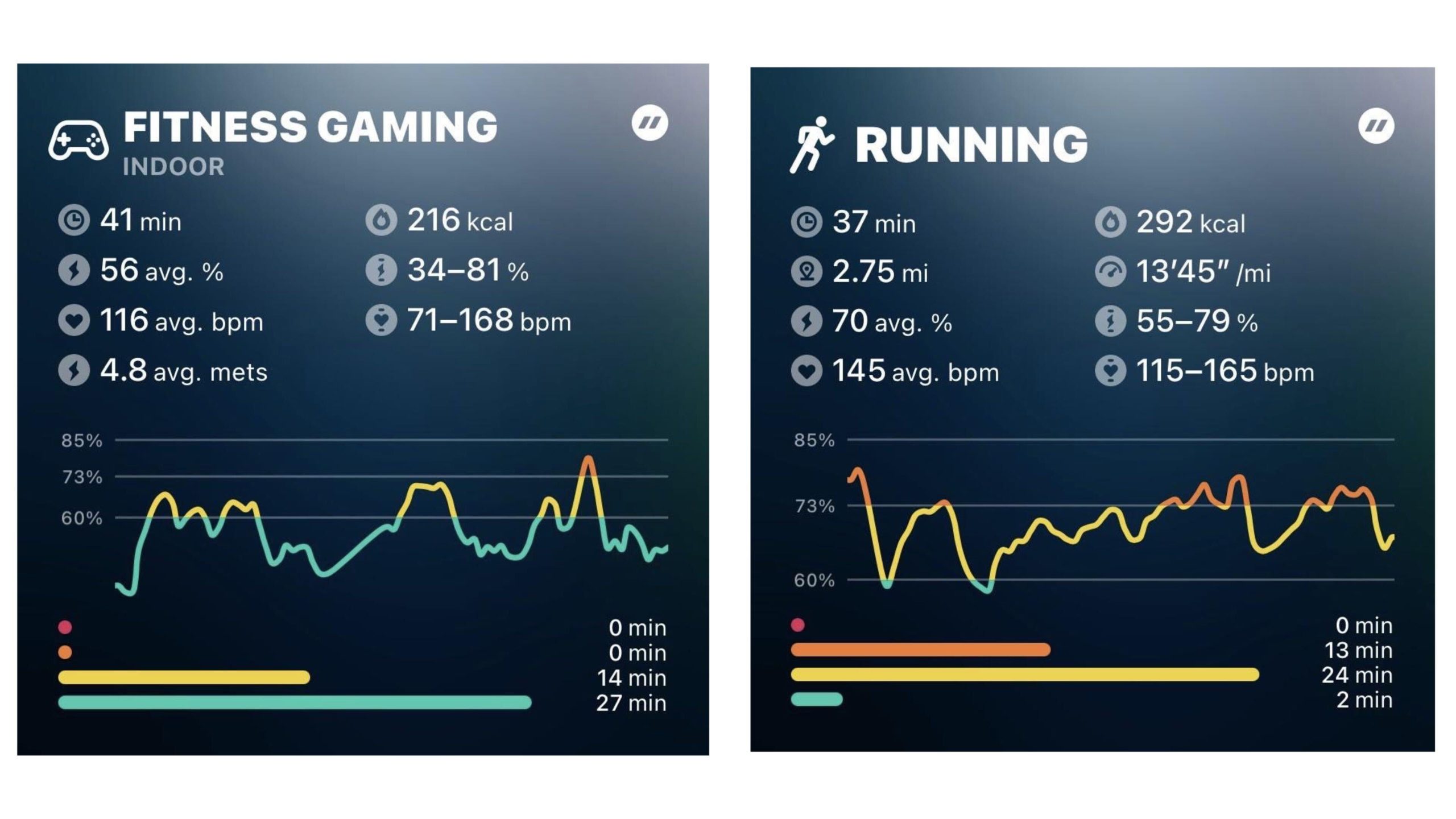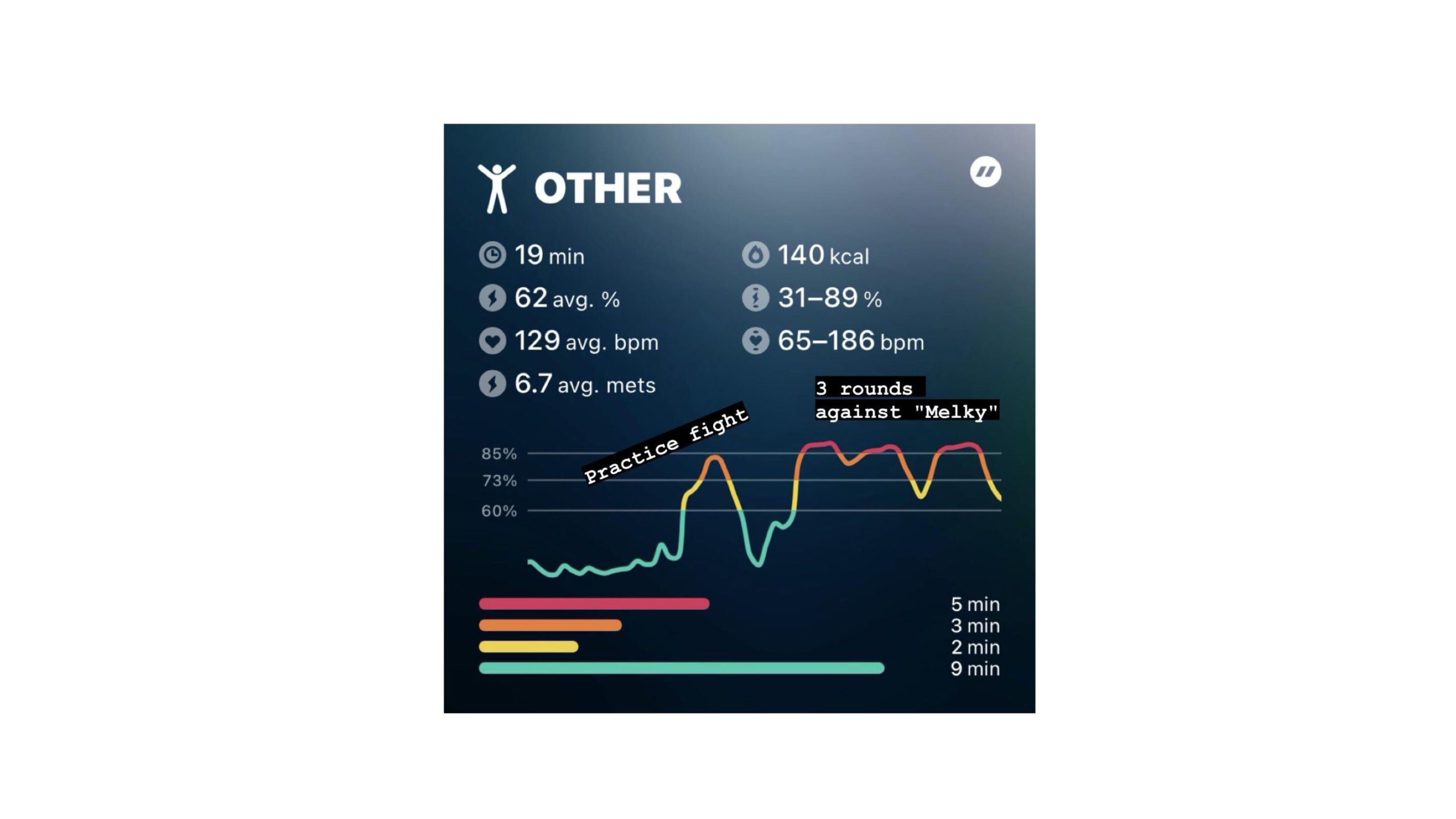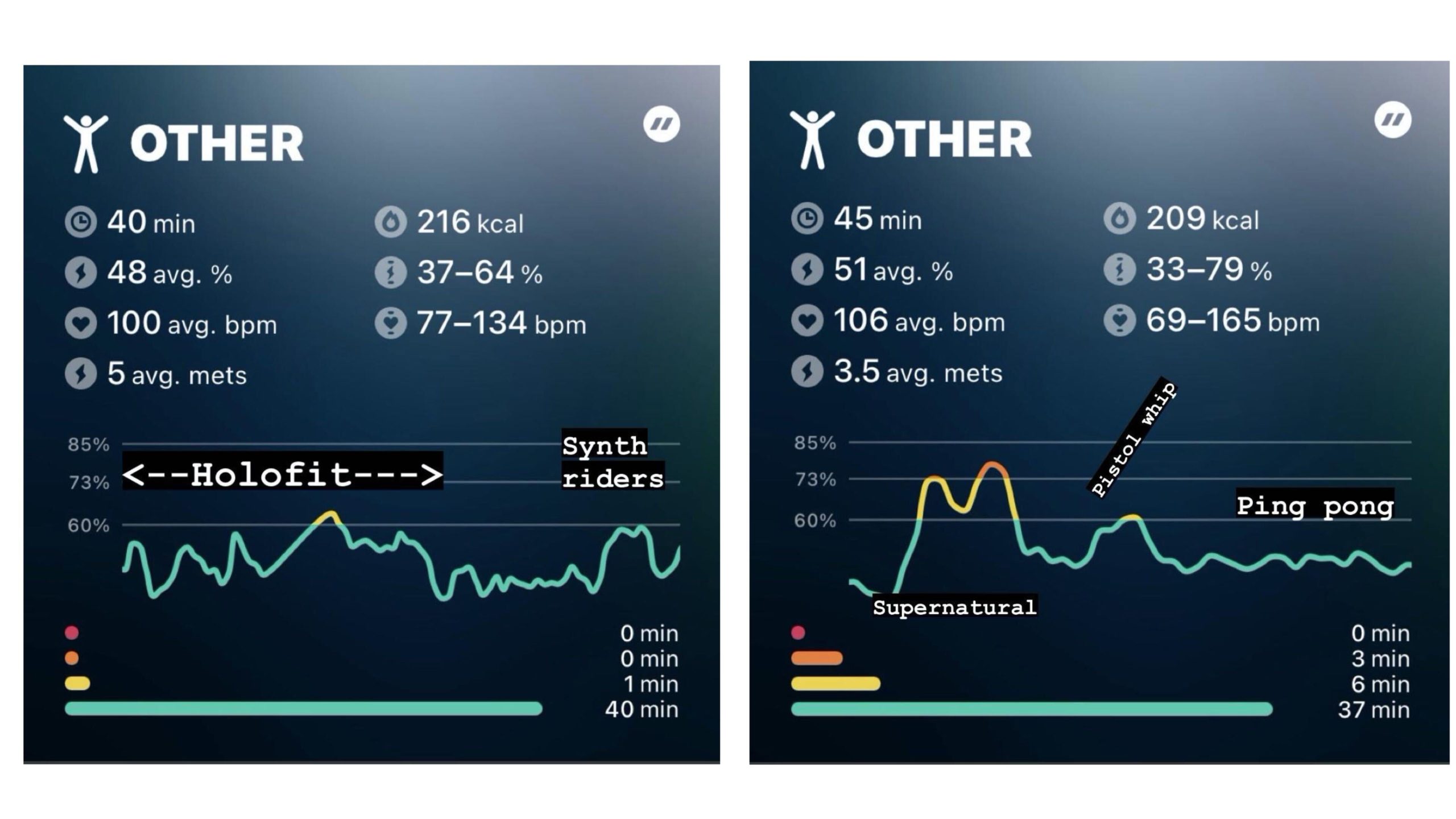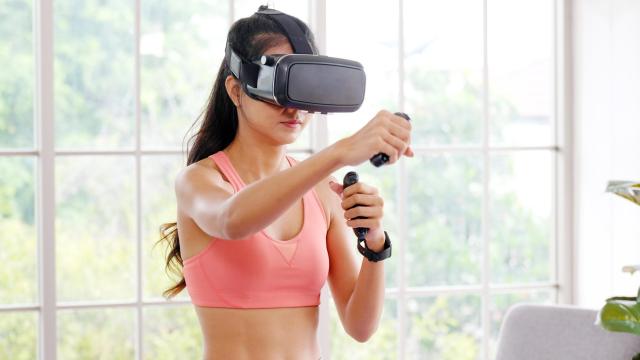I set out to learn whether virtual reality games can give you a good workout, and last week you heard about a bunch of my favourites. Now that I’ve adventured through the virtual world, I have returned to you with opinions.
How do VR games stack up against actual workouts?
The ultimate question I was trying to answer, as I slashed and punched and awkwardly waved my hands for several cumulative hours, was Are these games actually a good workout? With so many different games and so many possible definitions of “a good workout,” it’s not an easy question — but I think I have the answers mapped out a bit.
The whacking-things games are good for light cardio.
Maybe even medium cardio. The squats, while incredibly boring and annoying, bring more of your body into the workout and contribute to raising your heart rate. I tried doing a few songs in Supernatural with weights on my wrists (Bala Bangles specifically). While they definitely made my arms more tired, I don’t think this really makes it a better workout.

The charts above show my heart rate during an easy jog (the “running” graph) and a few songs of Supernatural (the one marked “fitness gaming”). I felt like I was working hard in Supernatural; I couldn’t have really worked any harder unless I practiced enough to be able to do tougher levels that ask me to move faster.
The colour-coded zones show clearly that these two are not equivalent types of cardio. Supernatural had me mostly in the low-intensity zone, about the same I’d expect from walking. It only occasionally got into the medium intensity zone, whereas even an easy run keeps me there pretty solidly.
Thrill of the Fight (uniquely in its category, I think) can reach that high intensity cardio zone.
Between the adrenaline and the constant throwing of punches, I was absolutely redlining on this one. You can see from the graph that I quickly got up into the high intensity heart rate zone and stayed there for each round of a fight. Love HIIT? This will hit the spot.

Games that keep you busy on a bike would be pretty awesome if you want to spend a lot of time on a bike.
My judgement is not the greatest here, since I didn’t try them on a bike. But if I had to choose between staring at my garage wall or gawking at the slightly blurry streets of Paris while I do a long ride, I’d probably opt for Paris. Now, does blurry Paris outrank a peppy Peloton instructor? That I’m not so sure about. If you like your Peloton, you should probably keep your Peloton. But if you want to get a long ride in while letting your mind wander, blurry Paris might be just the thing.

The graph above shows a sampler of games. Holofit, the one where you ride your bike (or, in my case, pump your arms and pretend you’re jogging in place) delivered a low intensity workout, like a brisk walk. Synth Riders (similar to Beat Saber) was similar. Supernatural got me up into the medium zone, Pistol Whip probably would have gotten me into the medium zone if I hadn’t kept getting shot (I am bad at this game), and Eleven Table Tennis was predictably chill.
How to use Oculus Move to track your exercise minutes
Oculus has a framework called Move that can track your minutes of active gameplay, and it even takes a stab at guessing how many calories you’ve burned. (As with other fitness trackers and gadgets, I wouldn’t expect the calorie numbers to be accurate, but you can use them to judge how intense a workout was.)
Unfortunately, the Move minutes and calories don’t sync with other apps, like Apple Health. The Move data stays on your headset itself, and you can check your daily numbers by looking up while you’re in a game.
Some apps have their own ways of tracking the work you do. Supernatural can track your heart rate through a device like an Apple Watch, as long as you have the Supernatural app open on your phone while you’re playing a game. (Yes, that’s three devices you’ll be using simultaneously: the VR headset, the phone, and the watch.)
I didn’t find any of this useful, to be honest. Tracking an “other” workout on the Apple Watch made more sense, since that synced with my other fitness-tracking apps.
What’s missing
VR fitness is not going to be a solution to all of your fitness needs. Most importantly, there’s nothing in here that will strengthen your muscles in any progressive way, which is what you need to get stronger. If you get sore quads from doing a bunch of squats in Supernatural, you may feel like you had a killer workout, but soreness isn’t an indicator of progress, and that soreness will fade within a few weeks anyway.
If you already have another way of strength training, and you’re just looking for some light cardio, VR can provide that. Half an hour of a whacking-things game every day will nicely fit the cardio portion of the U.S. exercise guidelines, even if you take weekends off.
Another thing that’s missing: a reason to do it every day. Sure, these games are fun, but are they more fun than going for a jog in the park with your running buddy, or showing up to a cycling class where you can borrow the instructor’s enthusiasm and motivation for an hour?
Supernatural, the most fitness-focused of the games I played, keeps encouraging me to set weekly goals and to keep a streak going. But to really work this device into your fitness routine, it seems like you need motivation outside the virtual world. Logging time in the headset can be a thing you do for your own health or fitness goals, much like logging mileage in your running shoes. But don’t expect the games themselves to keep luring you back. There are no addictive storylines or intriguing puzzles.
And the games that feel the most game-like are the ones that don’t work as well as a workout. Every time I die in Pistol Whip, I’m just annoyed that I have to start over; I’d like to get through the level, please. (That’s why I prefer the keep-going-no-matter-what mechanics of Supernatural.) But if you like these games enough to keep playing them, and if you’re sure you won’t forget the fitness apps even exist, then by all means, get one and enjoy.

Leave a Reply
You must be logged in to post a comment.